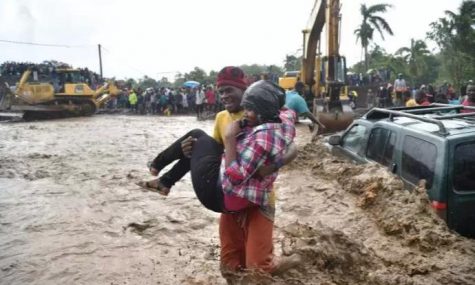Measuring the Damage of Hurricane Matthew

As Hurricane Matthew drew toward the shores of the eastern Caribbean islands, many of the towns in the region had been destroyed by general destruction imposed by the storm. From the time of the initial impact, the heavy damage has grown with “tens of thousands left homeless and outbreaks of cholera already claiming more lives,” as cited by reporters of Reuters Makini Brice and Joseph Guyler Delva stationed in Chantal, Haiti. The homelessness of many of the residents of the region is reasonably attributed to the destruction of homes from the storm, as the country was reviving from years of other environmental disasters.
The outbreak of cholera, however, had augmented from the mixture of water and sewage present in widespread contamination with the floods in the region. For the most part, the recorded number of deaths has reached 877 with the potential to grow, as dozens more are reported missing and conditions steadily worsening. Any hopes of effective communication are detained with cellular networks down and roads deemed inoperable by flooding. Nevertheless, the community is still working together to try and repair the loss inflicted by the storm. As houses are reduced to debris with remnants of a collision with cruel nature still intact, it seems that depredation has met no limit. It will take the efforts of many to revive stable conditions under such difficult and dire circumstances.
In the U.S, Florida was one of the first to be affected after the environmental altercation in the Bahamas. Water in the region rose at two and a half feet above ground during an impending flood. In North Carolina, water levels doubled as local news outlets recorded the conditions on social media. According to the National Ocean Service Data, Fort Pulaski in Georgia set a new record tide level of roughly twelve and a half feet above normal low tide two hours following the high tide.
Hurricane Matthew first emerged from the coast of Africa as a slow moving wave that gradually gained power from clusters of haphazard thunderstorms occurring. Typically disorganized, these thunderstorms do not pose a threat at this early stage. From late September, the weather conditions transitioned into a tropical storm with escalated growth. This followed with prominent thunderstorms occurring under designated regions and intensities. At this stage, the hurricane developed its circular motions, while not maintaining an “eye of the storm.” While not classified as a hurricane at this point, the effects of Hurricane Matthew would grow to be devastating.
The “eye,” a point in the center of the storm at which the conditions are relatively calm, could not reflect the sheer magnitude of force from the hurricane. The winds surrounding this center can reach up to 215 miles per hour.
The catastrophic destruction to the environment provided by the hurricane has been adequately noted as per the hurricane’s exclusive classification as a category five hurricane. With such conditions, families found their belongings floating adrift and homes being flooded with casualties steadily growing. As said by Florida Governor Rick Scott illustrating the sheer damage of the wreck, “This is not over. It could be the worst part of this is yet to come.” At this rate in the classification, the speeds of the hurricane have reach 157 miles per hour if not a greater deal more. With the highest recorded speed of the hurricane reaching 160 miles per hour, Hurricane Matthew met the calamitous requirements and the means of being especially destructive as speeds escalated to such lengths.

With the floods and other catastrophes in the regions amounting to 6.91 billion in damage, the number of causalities, water levels and other means measurement number cannot adequately account for the immeasurable losses inflicted by Hurricane Matthew.
The evidence provided through the effects of the cataclysm have only reinstated the potential for devastation through its grand impact. While the environmental damage remains focused on a select region, the tremors of this collision are far from being localized. The procedures the local regions will take may amount to years of continuous work. On the other hand, the families who have had the full force of the storm claim their personal homes, belongings, and security will have to go through far more to reclaim a basic right and necessity stripped from them by the hurricane.





